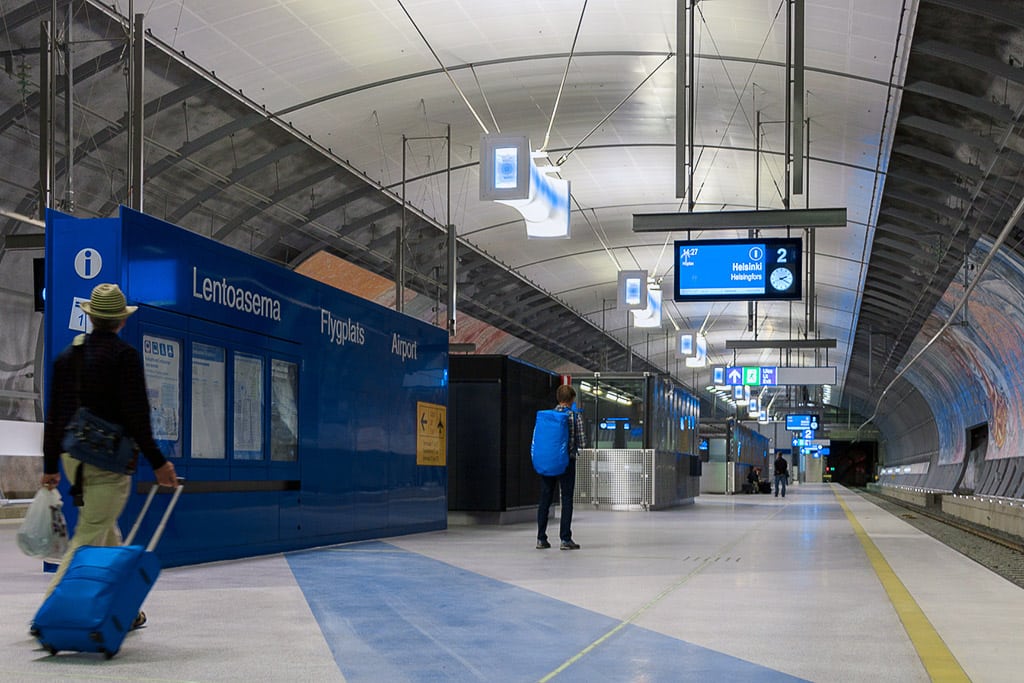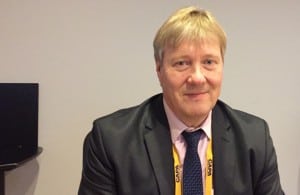Skift Take
Helsinki has advantages over larger hubs: its strategic location, and a terminal that is connecting passengers can easily navigate. It must grow without losing that edge.
During the CAPA World Aviation Summit in Helsinki, Skift enjoyed a little time on the side for an insightful conversation with Kari Savolainen, CEO of Finavia, the company that owns and operates Helsinki Airport.
We discussed growth, right-sizing for competition, and the strong focus on the passenger experience of this northernmost gateway to Asia.
What follows is an edited transcript.
Skift: You’re growing beyond your primary customer, Finnair, and attracting new airlines, like Qatar Airways. At the same time, you compete with Qatar’s own mega-hub, the newly built Hamad International Airport, for transfer traffic, just as your top customer, Finnair, competes with Qatar on routes to Asia. Do you plan to grow to compete with the world’s largest hubs?
Savolainen: Our estimates of passenger growth per year are something like 5%. Out of that, 25% is only related to China.
I think because there is growth in the industry there is room for both smaller and bigger players. Everybody has their own advantages.
We are quite compact so we are very efficient, very skillful. And [we have the advantage of] the distance between Helsinki and the big Asian cities where the growth is, in China especially.
For example, [compared to] Sweden, it’s one hour is less consumption of fuel. Also, if you can turn the aircraft within 24 hours, you can have a daily frequency with one aircraft. I think we will grow because we are so near the area where the world is actually growing, where the economy is growing.
We have estimated that we will grow on average something like 3.9%, which comes to 20 million passengers by 2020. That’s a quite realistic estimate.
With that growth, we can still make the airport very efficient with everything near; especially if we learn to utilize digital technology even better than we are now, which helps passengers to navigate in the airport.
We did compromise. In the beginning, we thought we would build a small satellite when expanding. Then we thought that we’d lose. Even if there is a tunnel or a bridge, we somehow lose the compactness of the airport. We now have the plan to connect two finger [terminal extensions]. All-in-all, I think our estimate is quite realistic and something that we can handle still with good quality.
What if the growth were 10%, which means that we would end up somewhere over the 30 million [by 2020]? Of course, we have one area of freedom where we can grow. We [currently] have two peak times: morning peak and afternoon peak. There’s a lot of time space in the middle.
If the growth rate is bigger, I think we must have a more even distribution of flights against the time axis. That helps, of course. With [our current] expansion, and with a realistic assumption of the time distribution of the flights, I think we can handle some 25 million passengers. But, after that, then we have to do something. I think there are certain options.
When we started the project, we [considered] what happens after 2030, when there may be 30 million passengers. Then, we expand. There are several alternatives, with pros and cons, which will allow this growth. The most conservative thing is parallel runways. There is [a standard separation] of one to three kilometers between parallel runways, so you build a terminal there. Maybe that’s the answer.
Of course, there we lose the compactness we have at the moment, but 30 million passengers is a lot of people to come to such a simple area. We have considered using a runway two, at 90º from these two parallel runways, which gives us space to adapt and add capacity by adding more [attached] finger [terminals]. That may be another option.
Skift: Helsinki is an easier airport to get around than some of Europe’s larger airports, like Charles DeGaulle, Heathrow, Frankfurt, Schiphol. But do you lose something by not building up to be as big as they are?
Savolainen: According to our surveys one third of all passengers, when they have to transfer on a flight, they make the decision of the route based on the transfer hub. Not the airline, or whether it’s 45 minutes more or less, but where they have to transfer flights. And two thirds of all passengers feel that it’s important. Only a third of passengers say, ‘It doesn’t matter, I’ll take the cheap [fares].’
You will always need transfer hubs. The question is: what is an optimal size of the transfer hub? OK, those that you mentioned: Heathrow, Frankfurt, they make up 80 million residents, 62 million in the UK, in Finland, there are only 5 million. Then, you need a transfer. I think [we] can become competitive with these mega-hubs because you can transfer easily.
It may be that Helsinki is not your final destination. Your final destination may be Rome, but it’s easier to switch airplanes..in Helsinki than in Heathrow. I think that’s the place where we can compete. I think, as transfer hubs, these mega-hubs lose their attractiveness a little bit, because we are much more efficient.
Skift: You’ve worked with your airline partner, Finnair, on an initiative to crowd-source the passenger experience features of tomorrow, called Quality Hunters. It has gotten a lot of attention on Social Media. How much of this program is marketing hype and how much is applicable information that you can translate to improvements in products and services?
Savolainen: Of course there is the marketing part [to it] because we want to be known as modern..and [as] listening to our passengers. But it’s quite honest. We try to find new ideas from that.
Of course, if you think about the Quality Hunters, it’s [Millennials] not a 50 year old businessman, as I am. Perhaps, it doesn’t represent the whole variety of passengers. But, to your question, of course there is a little bit of marketing, but that’s not the key thing. The key thing is to learn something. If they are [Millennials] today, after a few years they are middle-aged men and ladies. So it makes sense to listen to them. They are the adults of the future. It’s a serious thing. There are serious aspects to understand what the passenger needs, but that’s not enough.
We must also do other things. We must learn from other industries where there are more modern practices. So we must be one step ahead of our customers, meaning the airlines and also private persons. That’s something that we’re doing behind the curtain, so to speak. That’s something that we have to be more active in learning best practices out of different businesses, not only aviation.
Skift: At the CAPA Summit, your Senior VP pointed out that priorities are changing as airports evolve from ‘non-companies’ i.e. public utilities, to B2B companies, to B2C companies? What’s most critical, to your mind, for Helsinki to succeed in this changing environment?
Savolainen: The passengers. I think that airlines sometimes are a bit stubborn, from their point of view, and they say, ‘OK. we are the ones that give you the passengers, and, without us, you wouldn’t have the passengers.’
One can also take the other side. Normally, where do we get our money, both airlines and airports? It’s departing passengers, isn’t it?
They very seldom come to the airport by airplane. They come by bus, by their own car, by railway, and they need a lot of infrastructure to handle them. A big airport needs road arrangements–it’s a lot of money, a lot of infrastructure.
Actually, we are collecting the people to one spot, so that airlines can make money out of that. So which one is the egg and which one is the hen? That’s a good question.
I think that the main thing is that we remain competitive price-wise, from an airline point of view, and that we are an airport that passengers vote for. Because [passengers] make the decision, at the end of the day.
The Daily Newsletter
Our daily coverage of the global travel industry. Written by editors and analysts from across Skift’s brands.
Have a confidential tip for Skift? Get in touch
Tags: ceo interviews
Photo credit: The in-airport train station at Helsinki Airport. Oona Räisänen / Flickr

